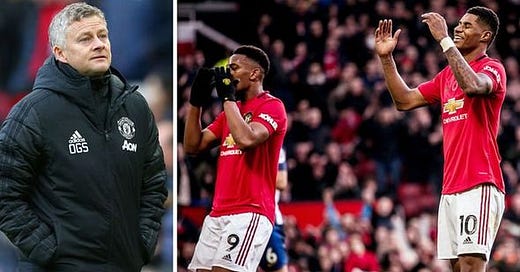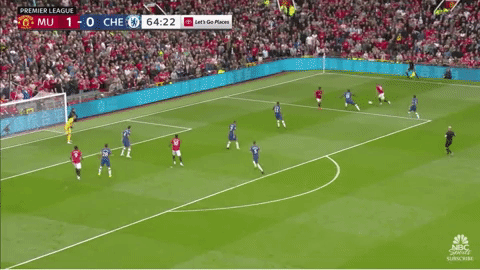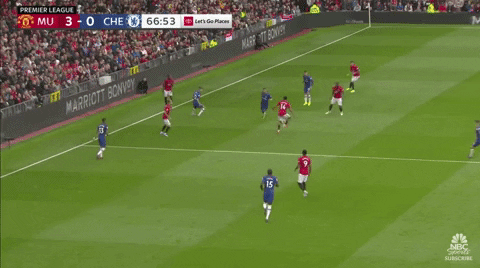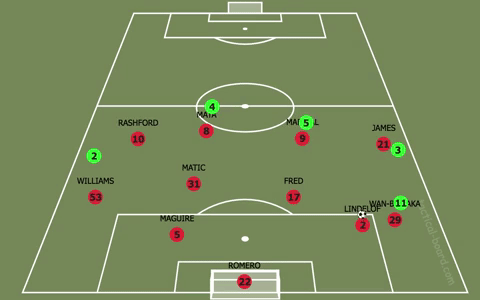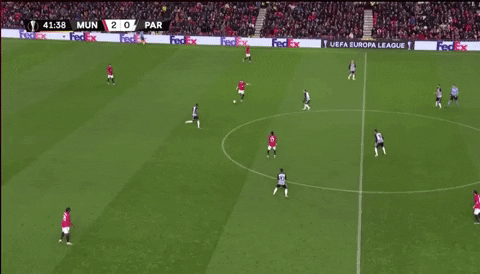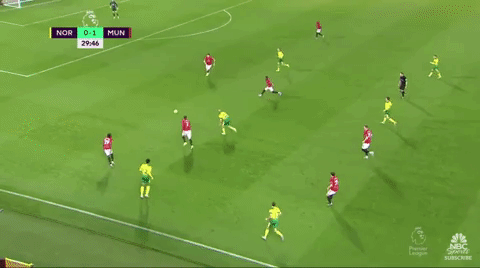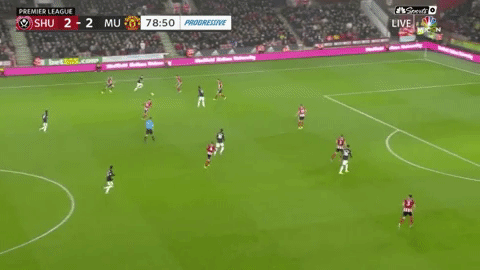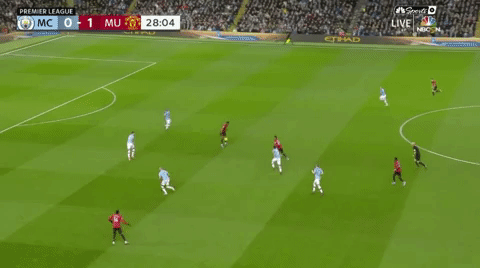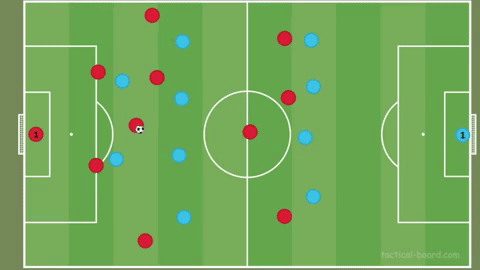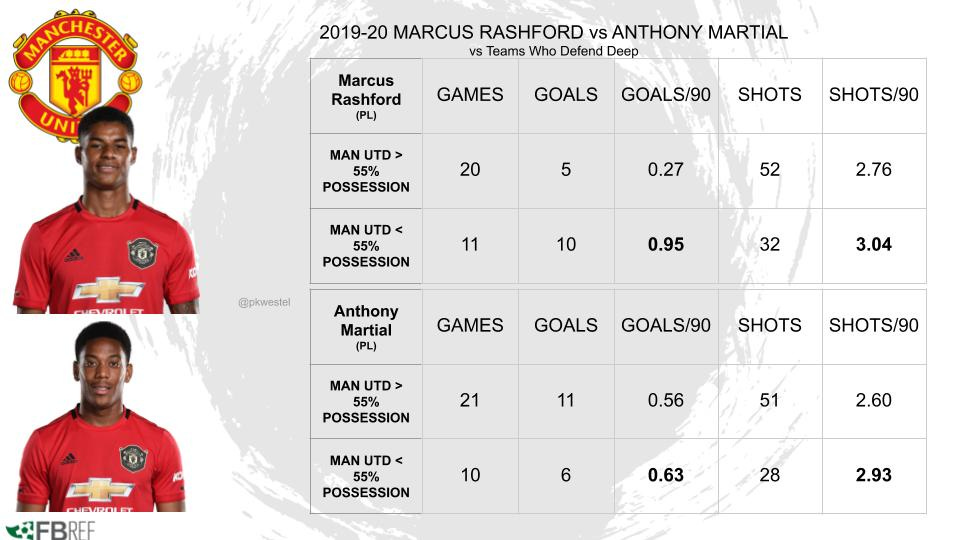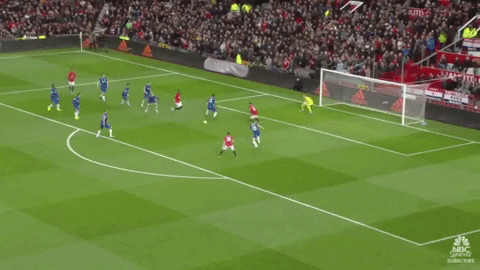The Different Tactical Eras of Ole Gunnar Solskjaer: Part Three
Rashford and Martial: The False-Nine
Note: this is part three of a five part series on Ole Gunnar Solskjaer and the distinctly different tactical ‘eras’ he’s had during his two years in charge of Manchester United.
Please read the introduction for more information and if you haven’t done so yet, subscribe for more of Kwest Thoughts. If you missed it click here to go back to Part I.
Note: Throughout this series advanced stats are from Statsbomb via Fbref. At times xG from understat is used and it’s noted.
Period: October 2019 - January 2020 (Norwich home)
Base Formation: 4-2-3-1 (False-9)
Most Benefitting Player: Marcus Rashford
Second Standout Player: Dan James
Ole Gunnar Solskjaer’s next tactical era didn’t actually take form until about two months into the next season. That’s because, it was never really supposed to happen.
Ole Gunnar entered his first full season as Manchester United manager with a lot more questions than answers. Not just about whether he was fit for the job, but who in his team could he rely on.
In his first summer Solskjaer oversaw a hefty clear out of deadwood plus senior attackers Alexis Sanchez and Romelu Lukaku.
All those departures were replaced by… three players. Centerback Harry Maguire, 21 year old right back Aaron Wan-Bissaka, and 21 year old winger Daniel James who spent the past season in the Championship. For those scoring at home that’s a ready made centerback, a raw fullback who was outstanding defensively but was still developing the attacking part of his game, and a 21 year old prospect who at best would be a squad player this year.
The plan was clear. Bolster up a defense that conceded 54 goals the previous year, begin developing the attack around the plethora of young attackers in the squad, and hope Marcus Rashford, Paul Pogba, and Anthony Martial could provide enough scoring to turn those 2-2 and 1-1 draws from the previous year into 2-1 and 1-0 wins with that new defense.
But where to play everyone?
Ander Herrera’s departure meant the 4-3-3 that unlocked Pogba when Solskjaer first arrived wasn’t really an option. Neither Scott McTominay nor Andreas Pereira could do what Herrera did. Fred probably could have done it, but he was still coming off a horrible first season in English football and entered the season a distant fourth in the pecking order. Solskjaer did target Newcastle’s Sean Longstaff to do that job but United rightfully walked away when Newcastle gave him a £50 million valuation.
The system needed to be changed but more than that there was a question of what to do up front. Rashford went on a tear when OGS first took over but only scored one goal after his penalty in Paris.
Next to him was Anthony Martial. Martial signed a new five year contract shortly after Jose Mourinho left the club, but while Rashford was tearing it up under Solskjaer, Martial was most certainly not. The Frenchman only found the net four times in all competition during Solskjaers five months in charge. With United now making a size able - and long - term investment in Martial, they needed to get a return.
You didn’t have to take a long look at Martial’s shot chart from his four years at Old Trafford to recognize a pattern.
When he gets into the dangerous areas, he’s pretty good at putting the ball in the net. When he’s coming from out wide, much less so. The logical thing to do is figure out a way to get him more shots from in front of goal.
For a player that arrived at Old Trafford as a striker the answer was simple. The #9 shirt was returned to Martial who would be deployed centrally. Rashford would operate not so much as a left winger, but as a second forward coming off the left, and running into space in behind. Paul Pogba would be deployed deeper in midfield where his passing ability could pick out those runs.
This plan lasted all of four games before both Pogba and Martial were injured. Ole needed another rethink.
United now had just one senior forward - Rashford - who already showed he wasn’t really a center forward. He struggled to play with his back to goal which was an integral skill your striker needs to have if you want to play how Solskjaer ideally wanted to play.
Behind Rashford was a midfield five of Juan Mata, Dan James, Andreas Pereira, Scott McTominay, and Nemanja Matic. It shouldn’t come as a surprise that United only scored two league goals during that stretch, and one of them was a penalty.
United managed to survive that six week stretch but without Pogba’s passing, they lacked an creativity in midfield and Solskjaer needed to find a way to work around that. His solution was to fully embrace United’s counter attacking mentality. If your midfielders couldn’t create, get the ball into space as fast as possible.
Once Martial returned in October, Solskjaer quickly settled on a first choice XI. And by "quickly settled on a first choice XI” I mean nine of the 11 players picked themselves thanks to no one else being available and the only questions you had to wonder were “who’s going to start at left back” and “Andreas Pereira or Jesse Lingard?”
He lined the team up in a 4-2-3-1 shape with Martial being asked to play much more as a false-9, dropping into midfield to receive the ball with his back to goal, while Marcus Rashford and Dan James ran beyond him.
This got James into space and allowed him to use his pace where he could then look to find Martial running for the near post or Rashford at the back post.
Or Martial could just go directly to Rashford running in behind.
This was a system built to to maximize pace and unsurprisingly, Rashford thrived. From October (when Martial came back) through January Rashford scored 11 goals in 14 Premier League games (8 of those coming from open play). His pace, directness, and dribbling skills helped him win two of those penalties himself - in crucial matches against Tottenham and Manchester City. Add in a goal in the Europa League and four goals in the League Cup - particularly that sensational free kick against Chelsea - and United had a budding superstar on their hands.
On the other side was Dan James. James scored three goals in his first four matches but with Pogba injured fully going the counter attacking route, he was asked to be less of a goal scorer and more of a creator.
James duly obliged, providing six assists in 11 games between October and January before he ran into a wall. All in all over the first half of the season Solskjaer managed to get three goals and six assists over the first half of the season from his new signing.
That’s not so insignificant when you think about how the fanbase feels about James as a player now. Or that the man he “replaced,” Alexis Sanchez, had provided United with just three goals and six assists total in the Premier League during his time with United.
For all of James’ shortcomings, Solskjaer put him in a system that maximized his talent. It’s easy to be cynical and think James racked up those six assists by just using his pace on the counter and squaring the ball to Rashford, sort of like this.
That was actually the only time James did that. He did have another that was just the way United drew it up Martial with back to goal getting the ball to James who could find a breaking Rashford.
Those ended up being the only two assists that came ‘in transition.’ The other two thirds of his assists came from him doing regular winger things.
United had the ability to play some tantalizing football in this system but there was just one flaw. What happens if your opponents are sitting deep, letting you have the ball, and not giving you space to run in behind them?
United didn’t have an answer for that. Nor did they have the players. To break teams down from a 4-2-3-1 you need midfielders who could pass the ball quickly and you need to be able to create shots.
Marcus Rashford was emerging as a superstar, but he’s never been the type of player who can create shots on his own. Scott McTominay and Fred didn’t have the passing profile. If you’re not playing incisive passes between the lines, it just allows the defense to move with you and keep their shape.
Passing the ball quickly and through the lines gets the ball to your playmakers and gives them options.
With Jesse Lingard and Andreas Pereira being a creative black hole in the number 10 role, United couldn’t make the man their system was built around consistently dangerous.
Rashford became the personification of this Ole Gunnar Solskjaer team. He could carry you in games against Chelsea, Leicester, Liverpool, Tottenham, or Manchester City. But then he’d disappear against the likes of West Ham, Newcastle, Bournemouth, Everton, and Watford when there wasn’t space for him to run behind.
It’s a bit of a problem to be built around a player who could be so inconsistent. This wasn’t sustainable and Solskjaer was going to have to address that.
The first half of the season was all about adaptation for Solskjaer. Constant adaptation. With such a thin squad every injury created yet another hole in the team and some shook up the dynamics.
Solskjaer may have wanted to spend the season building the foundations of a set style of play, but instead he was forced to constantly alter the plans as he tried to paper over another crack. This was also a team that needed to grow into themselves.
When Pogba went down Solskjaer responded by ramping up United’s pressing levels (from 169.25 per 90 to 180.33 per 90) through the Manchester City match. Their press effectiveness was erratic at best, with a pressure regain rate (per fbref) of just 26.52 percent.
Heading into December Solskjaer knew he had to scale that back so as to not burn out his squad. Following the derby at the Ethihad, United scaled back their pressing to just 157.30 per 90 (through the end of this ‘era’ in January). It was no longer an all out press, but rather they became much more selective in where and when they pressed, resulting in a rise of how successful the press was with a regain rate of 30.48 percent.
While pressing overall went down, they focused far more on pressing in the attacking third as they attempted to win the ball back high up the field to quickly create chances. Prior to December 21.90 percent of their presses came in the final third, after the City match that rose to 26.75 percent, but United still struggled to turn those turnovers into goals.
For the most part this was working. Despite all their deficiencies and inconsistencies United entered the new year fifth in the table and just four points behind Chelsea for the last Champions League spot. Expected points (xPTS - per understat) actually had United in third, suggesting that their performances were better than what was thought.
United were doing just about enough to win most of their games. But ‘just about enough’ doesn’t take into account the randomness that this sport throws up such as individual mistakes or just plain old bad luck. Like Ruben Neves hitting a worldie from outside the box followed by Paul Pogba missing a penalty (Wolves). Or Marcus Rashford missing a penalty followed by David de Gea making a mistake on the other end (Crystal Palace). Or David de Gea getting bullied in the air allowing a ball to go off Victor Lindelof into the net (Everton).
They also shot themselves in the foot time and time again with some horrific finishing.
Just about enough was keeping United afloat, but they needed more. Especially in January when Marcus Rashford’s back finally gave out from carrying the team all season.
As United learned in September, without a second forward this system just doesn’t work. Suddenly United didn’t just need more, but they needed a tactical change as well.

